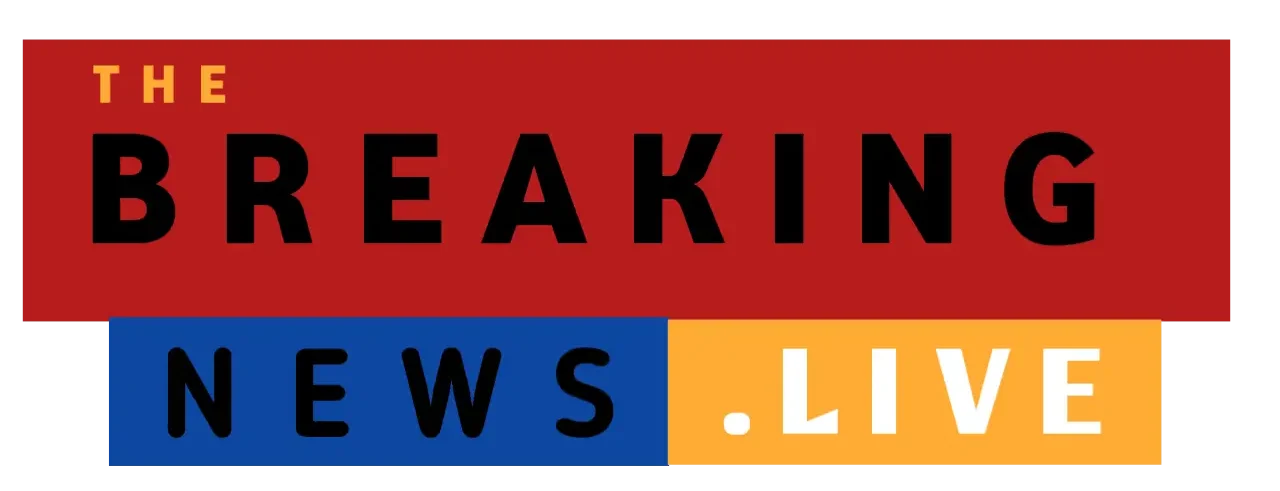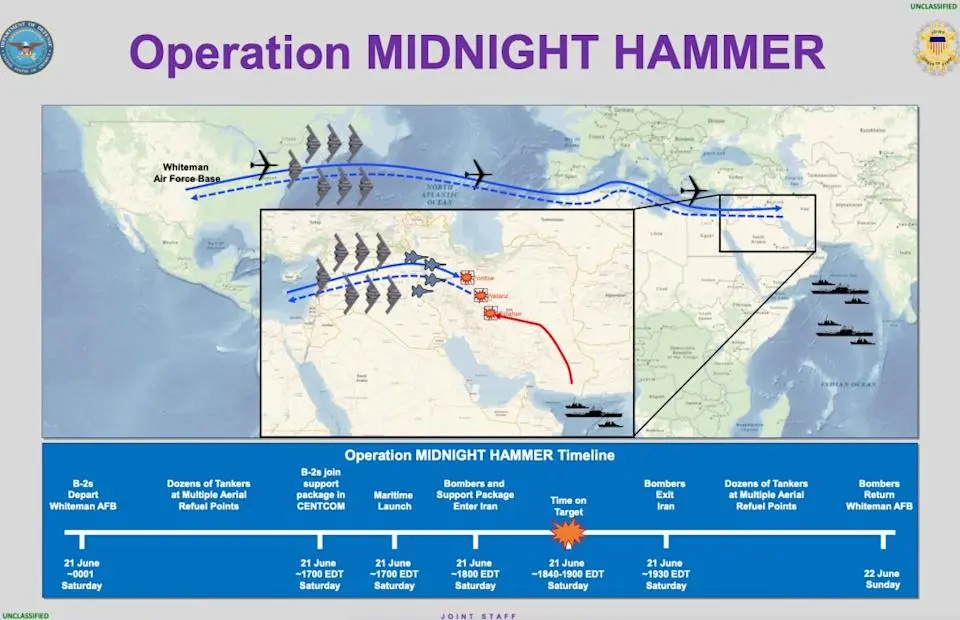In a rapidly shifting geopolitical landscape, the United States has launched Operation Midnight Hammer, a covert, multi-domain initiative aimed at neutralizing emerging threats from Iran’s expanding influence in the Middle East. Though not officially confirmed by the Pentagon, multiple intelligence leaks, satellite imagery, and defense briefings have sparked intense speculation across military and political circles.
This operation comes amid rising tensions between Iran, Israel, and the broader region—including Iraq, Syria, and Lebanon—and is being closely monitored in real time through Pentagon press conferences, media briefings, and digital satellite platforms like Maxar.
What Is Operation Midnight Hammer?
While the Pentagon briefing today avoided confirming the operation by name, sources indicate that “Midnight Hammer” refers to a synchronized cyber and reconnaissance campaign targeting suspected Iranian nuclear sites and military logistics facilities. Some reports suggest it may include joint operations with Israeli intelligence and special operations units.
“This is a measured response to an escalating threat,” said Gen. Dan Caine, a name increasingly referenced during briefings, though the Pentagon press conference today stopped short of outlining specifics.
The operation is said to focus on slowing Iran’s nuclear development capabilities, believed to be accelerating at multiple locations across central and southern Iran, as confirmed by open-source Iran nuclear sites maps.
Iran’s Nuclear Ambitions Resurface
Iran’s nuclear ambitions have long concerned the international community. Following the 2018 withdrawal of the U.S. from the JCPOA (Iran nuclear deal) under then-President Donald Trump, efforts to contain Iran’s uranium enrichment have largely failed.
Recent satellite imagery, made public by Maxar Technologies, shows increased construction activity near key Iran nuclear site locations, including Natanz, Fordow, and Arak. Meanwhile, the current Iranian president, whose rhetoric has grown increasingly defiant, claims Iran’s intentions are peaceful—but has resisted further IAEA inspections.
Donald Trump’s Latest Message on Iran
Former President Donald Trump made headlines again this week with a fiery message about Iran during a campaign rally in Ohio, where he warned of a “sleeping nuclear menace.” He accused the Biden administration of “falling asleep at the wheel” and claimed that regime change may be the only lasting solution to Tehran’s ambitions.
“When I was president, they didn’t mess with us. Now, they’re enriching uranium while the Pentagon fumbles,” Trump said, echoing sentiments shared on outlets like RealClearPolitics and The Atlantic.
Can Iran Attack the U.S.?
Military analysts have raised questions: Can Iran attack the U.S.? While a direct intercontinental strike is unlikely, Iran’s Middle East allies, including Hezbollah in Lebanon, militias in Iraq, and the Houthis in Yemen, pose a threat to American personnel and embassies in the region.
Hegseth News and segments on Fox News have covered the buildup, with commentators speculating about possible proxy retaliation should Iranian infrastructure be targeted. The Pentagon live feed continues to stream emergency briefings, but as of now, no American casualties have been reported.
Did Anyone Die in the Iran Attack?
A minor skirmish last week near a U.S. base in northern Iraq resulted in injuries to three service members, but no fatalities have been confirmed. During today’s Pentagon briefing, spokespersons avoided confirming a link between that incident and Operation Midnight Hammer.
Iranian sources allege that an Israeli drone strike killed two engineers at a military facility near Isfahan. However, NYC news outlets, including the New York Post, noted that Iran has not issued a formal accusation against Israel or the U.S., indicating a reluctance to escalate publicly.
Diplomatic Dead Ends and Abbas Araghchi’s Silence
Diplomatic channels, once held open by figures like Abbas Araghchi, Iran’s lead nuclear negotiator, appear to have gone silent. No recent negotiations have been scheduled, and even European intermediaries are struggling to get clarity from Tehran.
“Iran has grown adept at signaling strength while avoiding direct confrontation,” wrote Mark Kelly in a column for The Atlantic. “But that doesn’t mean they aren’t preparing for war.”
The Biden administration continues to advocate for diplomacy, though its options are narrowing. Former VP Mike Pence publicly criticized the current posture, suggesting that the administration has “no coherent strategy for the region.”
Iran Nuclear Sites: The Map of Concern
Publicly available satellite data pinpoints more than a dozen suspected nuclear power plants in Iran, including heavy water reactors and uranium enrichment facilities. The Iran nuclear sites map, recently circulated in open intelligence circles, indicates key vulnerability zones that may be targeted in case of escalation.
Meanwhile, the U.S. has ramped up security around its own nuclear power plants, especially in coastal states. Ohio and Missouri (MO), which house multiple high-risk infrastructure assets, are under heightened cyber threat assessment protocols.
The Role of Real-Time Intelligence and Wordle?
Oddly enough, internet sleuths on platforms like Reddit and Twitter have begun picking up subtle clues in Pentagon briefings and even parsing Wordle scores in The New York Times for easter eggs, leading some to wonder if certain puzzle answers may be hiding coded messages. While far-fetched, it’s a sign of how tightly the public is monitoring the situation.
The UN and Iran: Is Iran Still a Member?
Despite speculation, Iran remains a member of the United Nations, although its relationship with Western diplomatic channels is more fractured than ever. UN observers have been restricted from visiting certain nuclear zones, raising alarm within the international community.
Life in the Balance
For ordinary Iranians and Americans alike, the shadow of conflict casts a dark pall. While Operation Midnight Hammer may remain unconfirmed, its implications are being felt. Civilian life, global diplomacy, and the energy markets are all teetering on a razor’s edge.
The situation continues to unfold, and all eyes remain on the Pentagon live feed, defense updates, and satellite imagery. As the world waits for clarity, one thing is certain: the midnight hammer has fallen, and the reverberations could reshape the Middle East for years to come.

